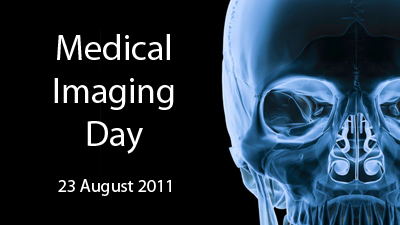Photoacoustic Tomography: Ultrasonically Breaking through the Optical Diffusion Limit
54 mins 52 secs,
724.66 MB,
WebM
640x360,
29.97 fps,
44100 Hz,
1.76 Mbits/sec
Share this media item:
Embed this media item:
Embed this media item:
About this item

| Description: |
Wang, LV (Washington University)
Tuesday 23 August 2011, 14:05-14:55 |
|---|
| Created: | 2011-08-26 13:42 |
|---|---|
| Collection: |
Inverse Problems
Open for Business: Medical Imaging Day |
| Publisher: | Isaac Newton Institute |
| Copyright: | Wang, LV |
| Language: | eng (English) |
| Distribution: |
World
|
| Explicit content: | No |
| Aspect Ratio: | 16:9 |
| Screencast: | No |
| Bumper: | UCS Default |
| Trailer: | UCS Default |
| Abstract: | We develop photoacoustic tomography (PAT) for functional and molecular imaging by physically combining optical and ultrasonic waves via energy transduction. Key applications include early-cancer and functional imaging. Light provides rich tissue contrast but does not penetrate biological tissue in straight paths as x-rays do. Consequently, high-resolution pure optical imaging (e.g., confocal microscopy, two-photon microscopy, and optical coherence tomography) is limited to depths within one optical transport mean free path (~1 mm in the skin). Ultrasonic imaging, on the contrary, provides good image resolution but suffers from poor contrast in early-stage tumors as well as strong speckle artifacts. PAT-embodied in the forms of computed tomography and focused scanning-overcomes the above problems because ultrasonic scattering is ~1000 times weaker than optical scattering. In PAT, a pulsed laser beam illuminates the tissue and generates a small but rapid temperature rise, which induces emission of ultrasonic waves due to thermoelastic expansion. The short-wavelength ultrasonic waves are then detected to form high-resolution tomographic images. PAT broke through the diffusion limit for penetration and achieved high-resolution images at depths up to 7 cm in tissue. Further depths can be reached by thermoacoustic tomography (TAT) using microwaves or RF waves instead of light for excitation. |
|---|---|
Available Formats
| Format | Quality | Bitrate | Size | |||
|---|---|---|---|---|---|---|
| MPEG-4 Video | 640x360 | 1.84 Mbits/sec | 762.06 MB | View | Download | |
| WebM * | 640x360 | 1.76 Mbits/sec | 724.66 MB | View | Download | |
| Flash Video | 484x272 | 568.8 kbits/sec | 228.85 MB | View | Download | |
| iPod Video | 480x270 | 506.25 kbits/sec | 203.69 MB | View | Download | |
| MP3 | 44100 Hz | 125.03 kbits/sec | 50.11 MB | Listen | Download | |
| Auto | (Allows browser to choose a format it supports) | |||||

